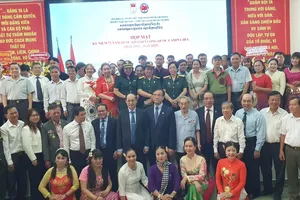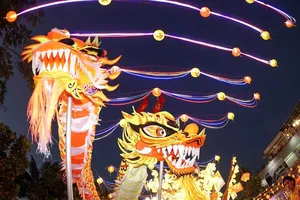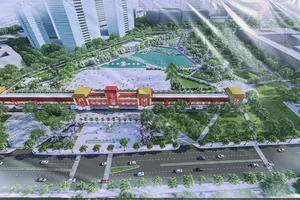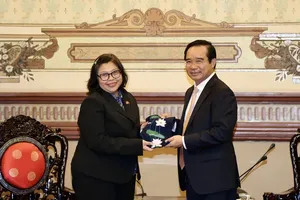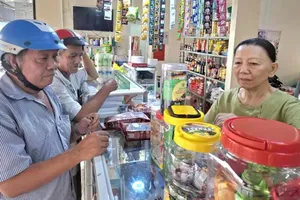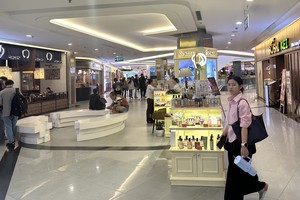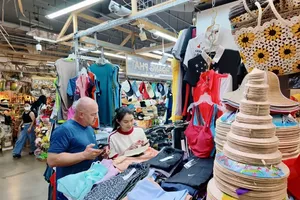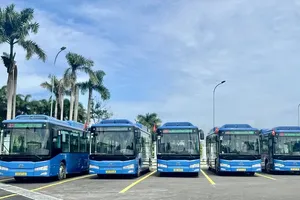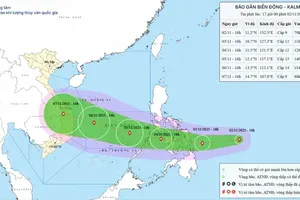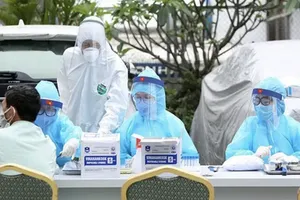
Phenomenon of “new beliefs and religions”
In a case that’s become all too familiar, a resident named Mai Thuy N. in HCMC was reportedly in a desperate state in early December 2024. Her elderly mother and her younger brother were both battling cancer. It was then she received a message from a woman named H., introducing her to a Facebook account: “Nang Luong Goc Trong Dong Viet” (Vietnamese Bronze Drum Original Energy).
The group’s promotional content was tantalizing: “Original energy can cure all diseases, even terminal ones, without medicine,” and it promised “healing from a distance, through the television.” Tragically, after following this “all-curing,” unscientific doctrine, Ms. N. lost both of her relatives.
She’s not alone. Many in HCMC are victims of “Nang Luong Goc Trong Dong Viet,” founded by Le Van Phuc (now in the US). He stressed “original energy” from the cosmos, which he claims is accumulated from the “love of historical masters,” can cure disease and upgrade stem cells. Though his two companies were shut down, the group continues promoting via social media, claiming hundreds of thousands of members and collecting fees. Authorities have repeatedly warned it’s a dangerous organization.
It isn’t just “Nang Luong Goc Trong Dong Viet” either. In recent times, social media has seen a rash of “new religions” that are not recognized by the state. These include the “Hoi Thanh Duc Chua Troi Me” (Mother God Church), "Ba Co Dzo," "Dao De Sua," "Thien Tong Tan Dieu," "Dao Duong Van Minh," and "Tin Lanh De Ga" (Dega Protestantism).
Among them, “Thien Tong Tan Dieu” reportedly self-declared its separation from the official Vietnamese Buddhist Sangha, changed its pagoda’s name, and preached illegally, creating a complex security and order situation. The “Hoi Thanh Tin Lanh Dang Christ” (Evangelical Church of Christ) allegedly gathered ethnic minority followers, demanding the establishment of a “separate state, separate religion.”
The illegal “Duong Van Minh” organization, meanwhile, used religion as a cover to “link up with reactionary elements abroad,” launching smear campaigns that falsely accuse Vietnam of human rights and democracy violations. And in the Southwest, some Khmer extremist elements have reportedly propped up the image of "Hero Oknha Son Kuy" to incite a separatist movement, calling for a “separate state” under the direction of external extremist organizations.
Hiding behind spirituality to subvert
On November 26, 2024, the Vinh Long People’s Court tried a case from Dai Tho Pagoda involving “abusing democratic freedoms to infringe upon the interests of the State and the legitimate rights and interests of organizations and individuals” (Clause 2, Article 331 of the Criminal Code) and “Illegal arrest or detention” (Clause 2, Article 157).
The alleged ringleaders included Thach Chanh Da Ra. The court reportedly heard how Thach Chanh Da Ra, the self-proclaimed “head monk,” gathered extremist elements. He allegedly “forged links with external Khmer reactionary forces”, violating the Buddhist Sangha Charter, and was “inciting separatism.” The group reportedly traveled to Ca Mau Province, “fabricating a story about the ‘grave of Oknha Son Kuy’s bodyguard’” to stir up ethnic hatred.
According to authorities, these activities were backed by the US-based KKF, which allegedly exploits international forums to slander Vietnam and destroy the great national unity bloc in the South.
Similarly, after his release from prison for fraud, Duong Van Minh reportedly showed no remorse. He enticed Hmong people to sell property and donate to his illegal organization, where he lived lavishly while followers suffered. After his 2021 death, his cronies continued to use his image to declare this religion as the official one of the H-Mong, demanding recognition.
Authorities are also resolutely fighting other “disguised” organizations such as “Thien Tong Tan Dieu” or “Tin Lanh De Ga” to ensure social security. These phenomena, exploiting new beliefs, are an insidious tactic under a cloak of spirituality to sow superstition, incite separatism, and attract anti-state elements, shattering national unity.
Sophisticated plots in digital age
Plots to divide religious and ethnic unity are now far more sophisticated, blending traditional methods with digital tools. A common ploy is to divide and conquer within and between religions, exploiting differences to sow discord and distort the State’s policy of religious equality.
Other tactics create direct conflict between religious/ethnic groups and the State, “fanning into flames” real-world incidents (like environmental disputes) to spark conflict. Under the guise of protecting community rights, these elements lobby foreign organizations, “lionizing” extremists as counterweights.
Most dangerously, many organizations reportedly have backing from anti-state networks abroad. Hostile forces give awards to extremist figures to boost their prestige and incite an opposition movement. This proves the plot to divide national unity is alive and well in both the real world and cyberspace. Exposing these plots is an urgent requirement to protect social order.
Preventing all plots to sabotage national unity
According to the HCMC Department of Ethnic and Religious Affairs, state management will be adjusted to fit Vietnam’s reality following the new two-tier government model and mergers. Religious organizations must adjust their structures as well.
However, “new religious phenomena” applying for recognition, land complaints, and interference from foreign NGOs create a potential risk of complex security issues. Therefore, state agencies must be proactive, strengthen leadership, and promote correct policies.
The core mission is to “promptly detect, prevent, and fight to defeat all plots” that exploit these issues to divide and destroy the great national unity bloc.


